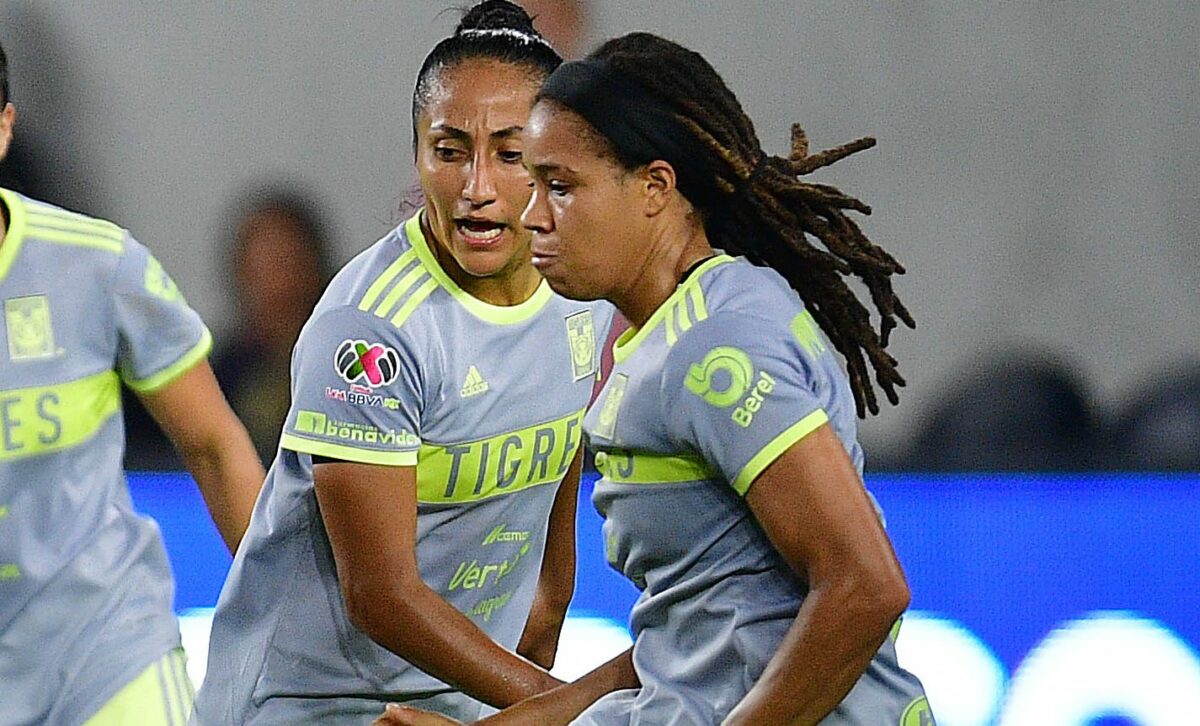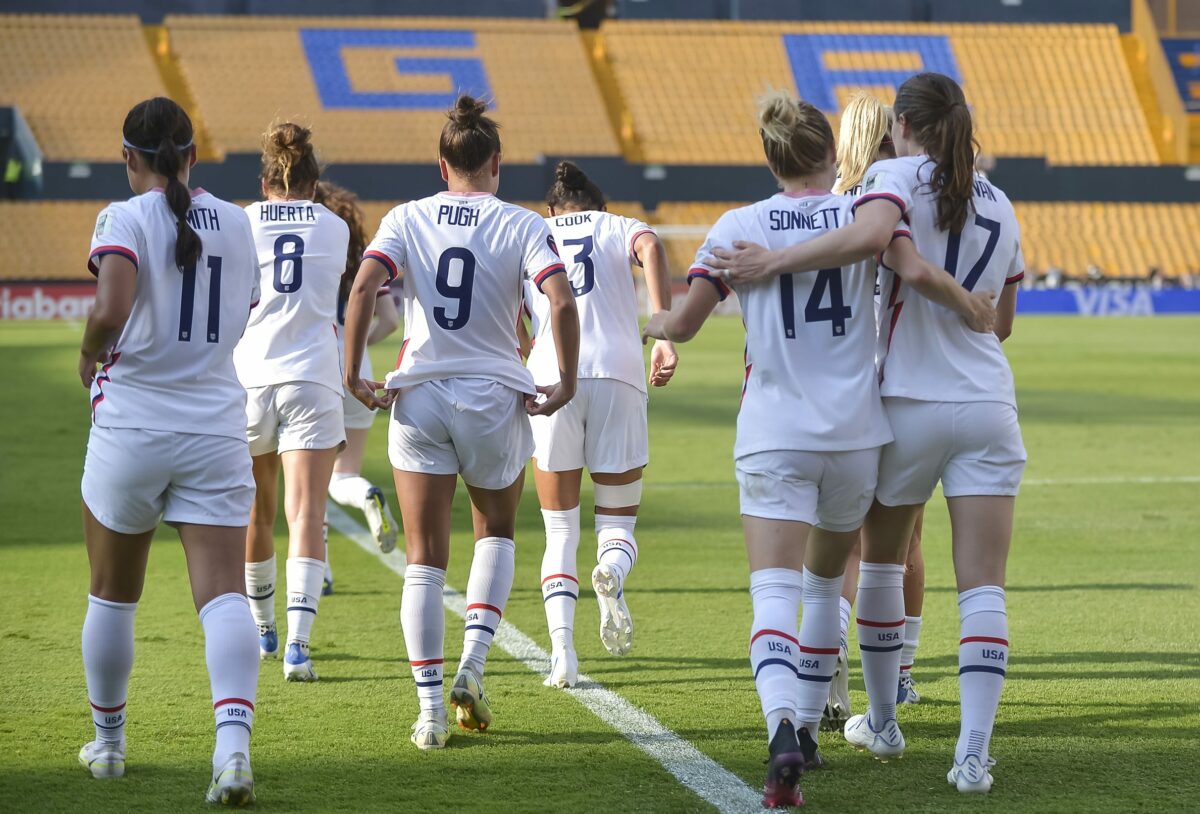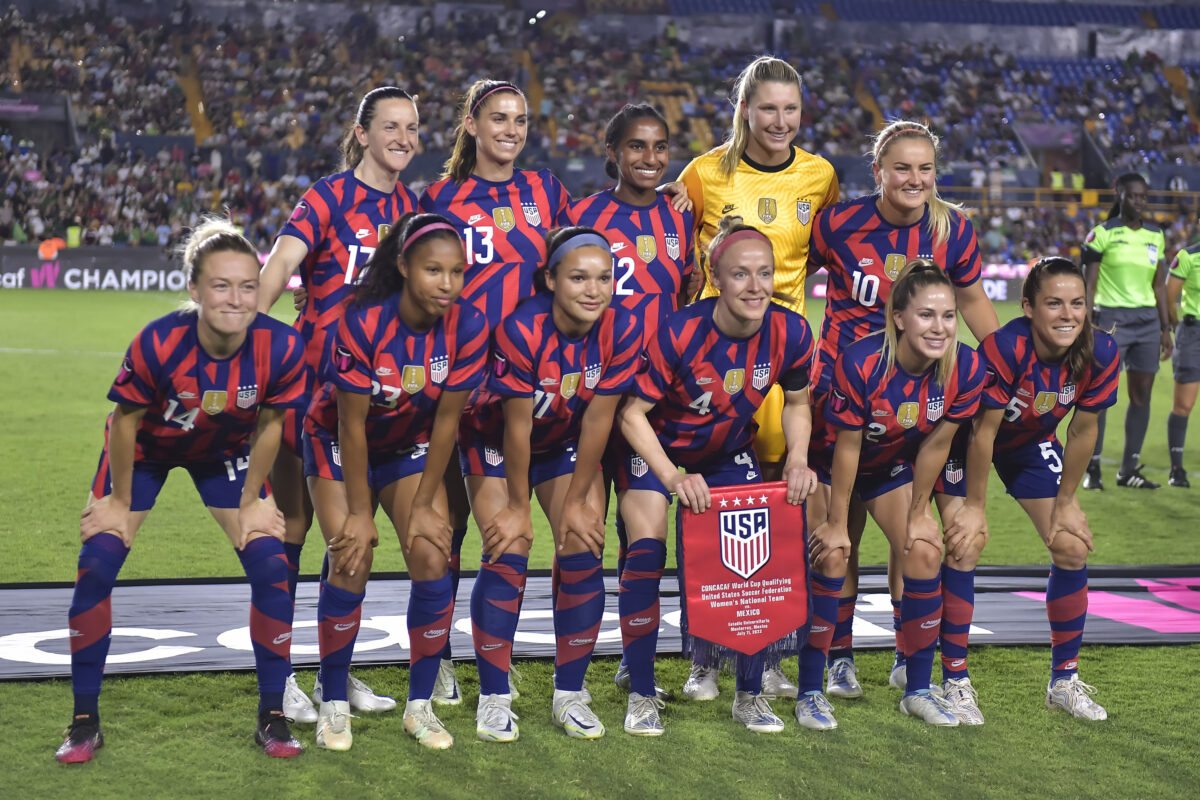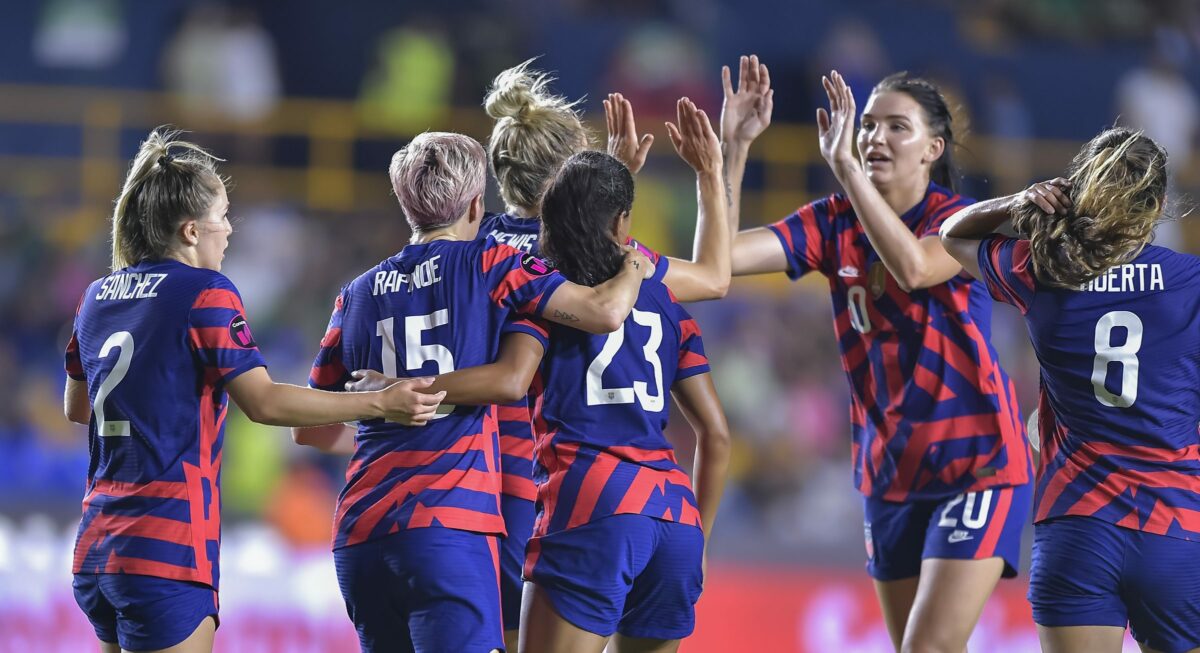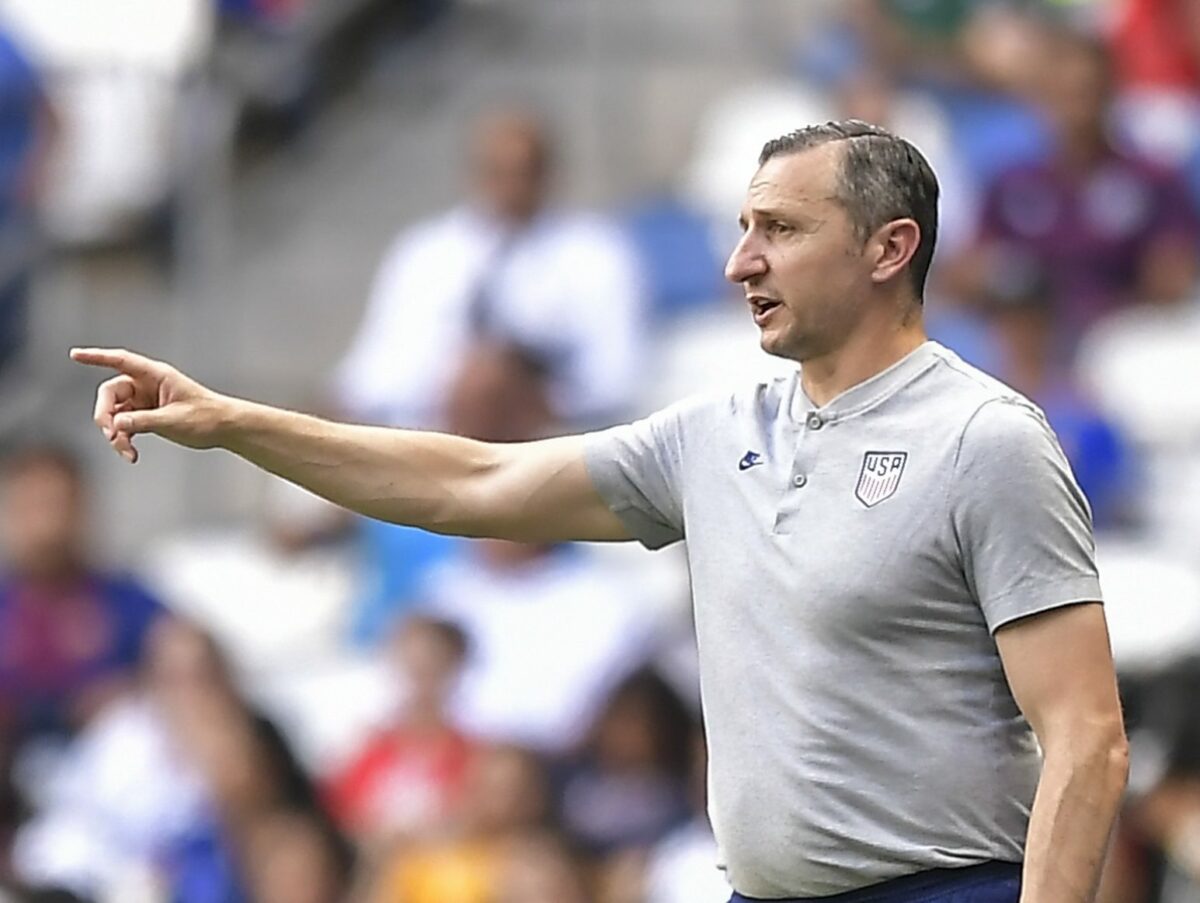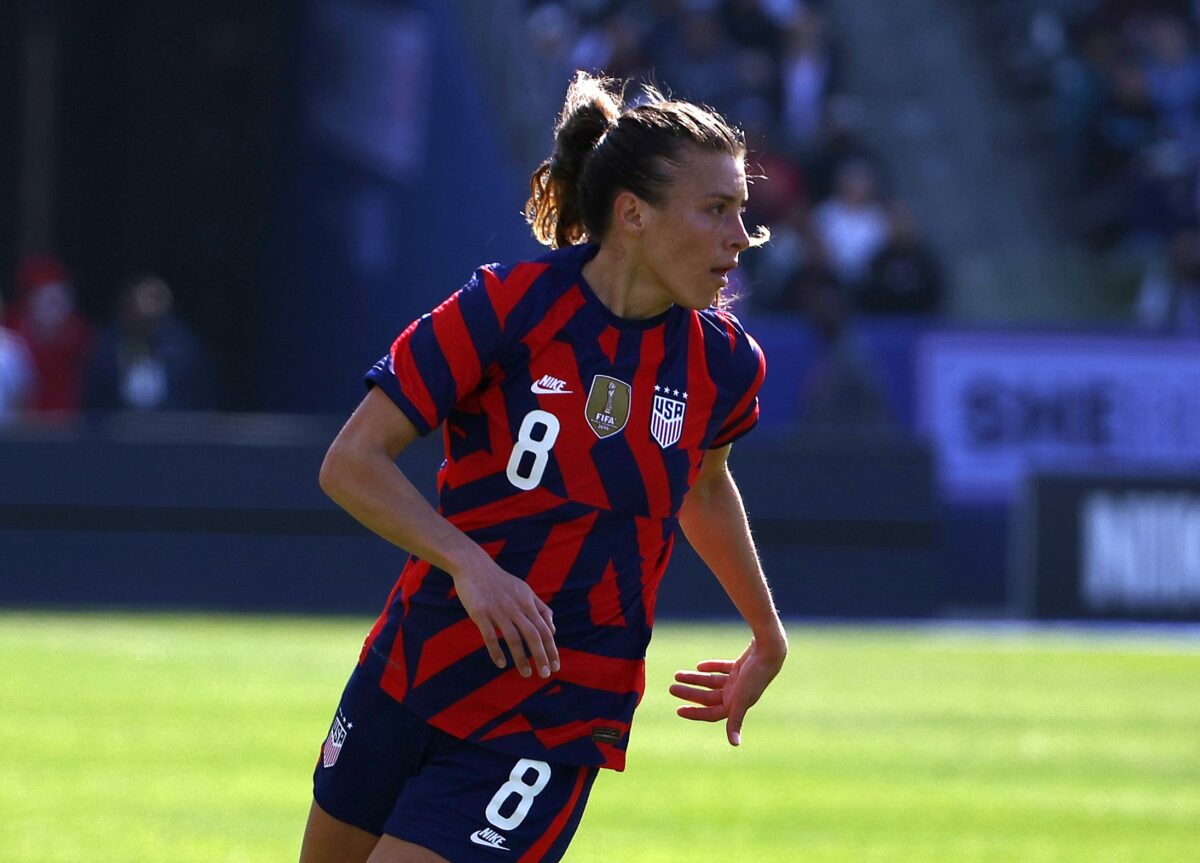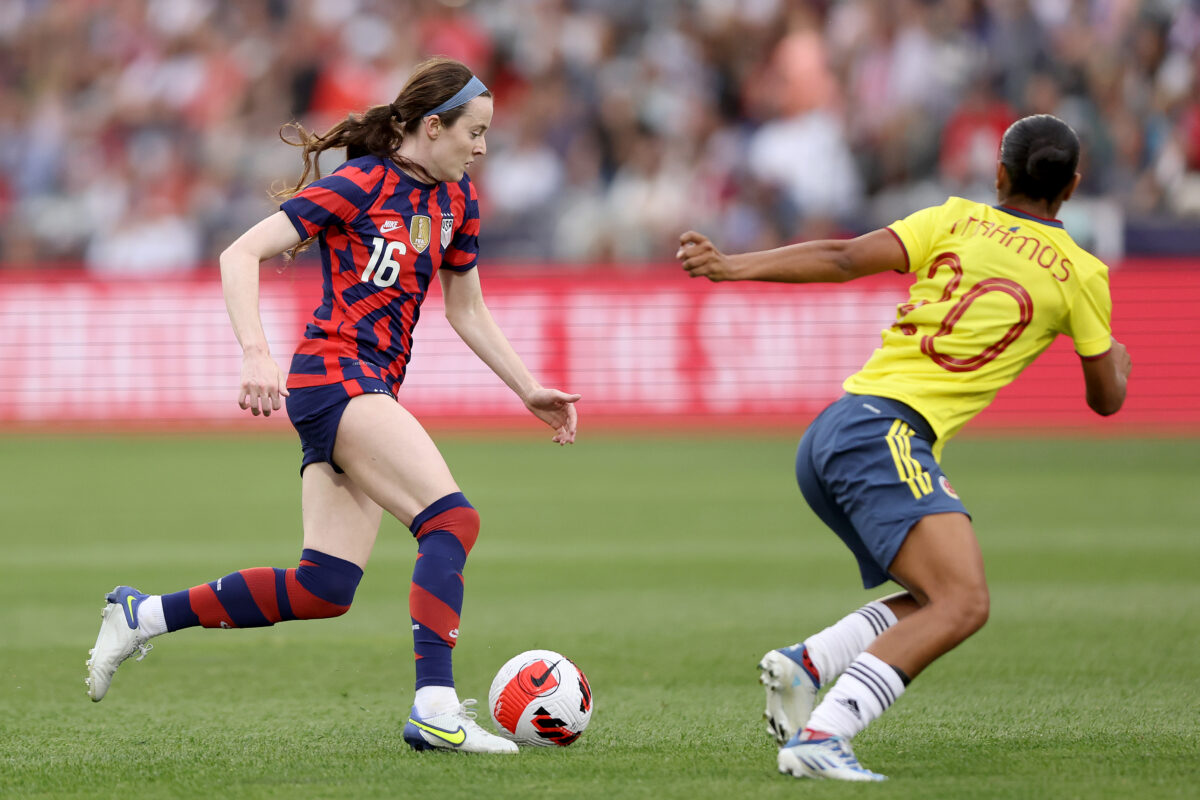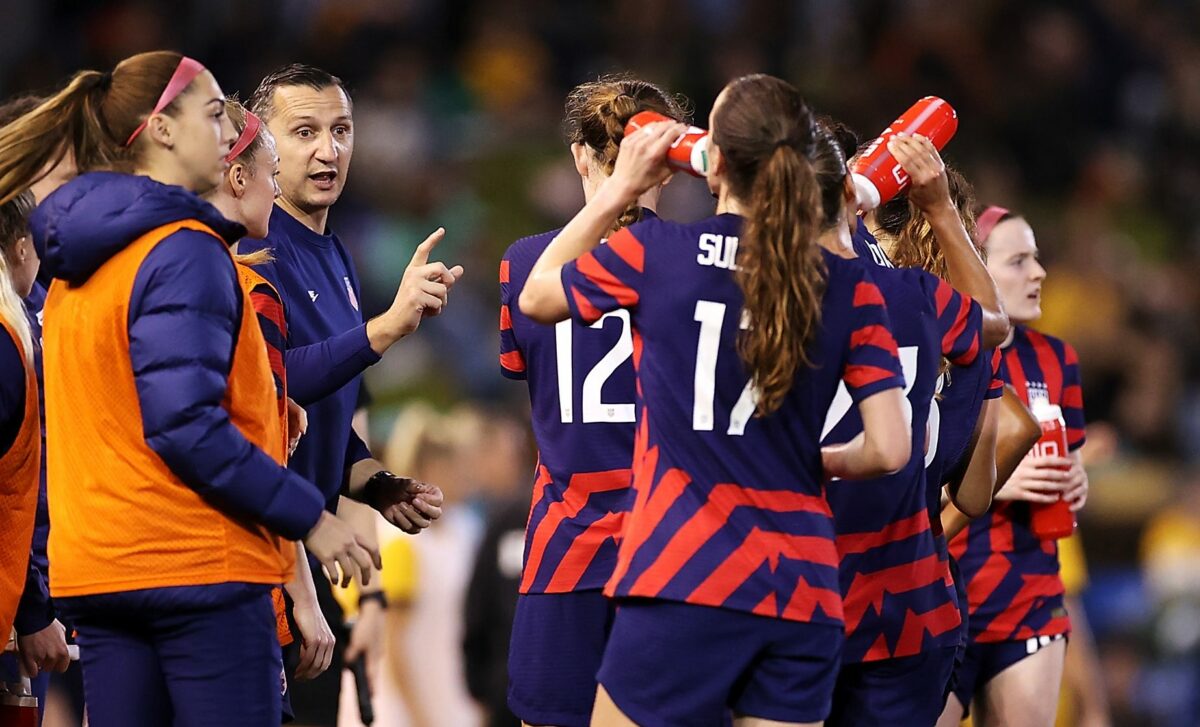Coming off of a 3-0 win over Haiti that was perhaps not as straightforward as fans expected, the U.S. women’s national team have focused on some areas to sharpen while also noting their respect for Jamaica, a potentially tricky foe coming up on Thursday (7:00pm Eastern, Paramount + and ViX).
Speaking to reporters on Wednesday, head coach Vlatko Andonovski and defender Emily Fox both highlighted star Manchester City striker Khadija “Bunny” Shaw as a major threat.
“They have a great No. 9, Bunny (Shaw),” said Fox, who connected Shaw’s skillset to how Haiti was able to pick out their wingers on the break against the USWNT. “Her being able to hold up the ball and then distribute it to the wide players is something that I think Haiti also did a good job of.”
Andonovski praised Haitian trio Melchie Dumornay, Nérilia Mondésir, and Roselord Borgella, calling them “world-class” before pointing out that Jamaica has players of equivalent stature. “We will be facing world-class players in this tournament,” said Andonovski. “We go against Bunny Shaw, we go against (Jody) Brown, I mean, they’re amazing players.”
Still, the USWNT sees Jamaica as posing a different sort of threat, as so much of their attack goes through Shaw, a target forward whose ability to playmake with her back to goal has troubled top teams for years.
“There are some similarities with Jamaica and Haiti, but I think that Bunny Shaw is just a little bit more powerful when she holds the ball, and obviously she’s got incredible abilities to distribute the ball,” said Andonovski, who added that he expected the same 4-2-3-1 formation Jamaica used in upsetting Mexico 1-0 on Monday. “We do expect them to create challenges.”
“Another thing which I think they’re very dangerous, is the set plays. They showed that they can score a goal and win a game on set plays, so that’s something that we’ve talked about,” said Andonovski, who saw Haiti barely miss scoring on a free kick that had similarities to the one Jamaica used to get past Mexico.
For Fox, there was a clear list of priorities to take care of to keep Shaw and the Jamaican attack bottled up. “I think for us, being physical, communicating, working as a team defensively and also just winning the first ball and making sure that we can eliminate their threats early,” said the Racing Louisville left back.
The USWNT also seems to have found some clarity in its lineup going forward. Andonovski said all 23 players are available to play Thursday night, and tipped his hand on at least two starters—Alyssa Naeher and Lindsey Horan—for this upcoming match against the Reggae Girlz.
Naeher has largely been first choice for the USWNT going back to the last two years of Jill Ellis’ tenure, to such an extent that this was Murphy’s first cap in a consequential USWNT game. However, Andonovski left the door open to a possible competition for the job, rather than simply giving Murphy one game and then moving back to Naeher for the long haul.
“We have three very good goalkeepers, two of whom we’re going to see in this tournament,” said Andonovski, who gave Casey Murphy the start against Haiti. “We felt like it’s important for Casey to get a game in, and part of the reason why is also because, just looking back in our Olympic games. Alyssa got injured and we had to play a goalkeeper in two of our most important games who did not play one second before.”
Andonovski added that “we’ll decide how we’re going to move forward” after watching Naeher’s performance against Jamaica.
Horan, meanwhile, appeared to wince after contact multiple times against Haiti, and has been playing for some time now with supportive tape around her knee. Andonovski pronounced her “medically, 100 percent,” and said that the choice to substitute her in the 68th minute comes down to building her back up after her club season in Europe ended on June 1.
“We were trying to manage her properly and not overload her, but build her up to her (normal) minutes,” explained Andonovski. “She’s going to start this game as well. And we’re going to continue building her so she’s properly ready for the upcoming games.”
Still, Naeher’s return will not be the only change to the USWNT lineup on Thursday. “There were some predetermined rotations before the tournament, and it’s not because we want to change certain players based on performance,” said Andonovski, who said that despite U.S. attempts to prepare for the hot Mexican summer, the weather has still been “a little bit of a shock” for the team.
“We actually did some extra running when it was not necessary. Going into second game, that’s something that has been on our mind, in terms of not just winning the game, but also managing the physical output and the load of the players in the game,” added Andonovski.
Nonetheless, that rotation is probably going to be just a one-off for Jamaica. Mexico, at home and with a possible World Cup spot on the line, figures to require a best available eleven, while the knockout rounds are qualifying for the 2024 Olympics.
“The starting lineup against Haiti for the last game, that’s probably the lineup that is going to play majority of the minutes in this tournament,” declared Andonovski.
In terms of improvement, Andonovski gave strong backing to his defenders, saying “I truly believe that we have the capability to stop any attack, any player in the world.” However, with Haiti creating multiple serious threats—particularly a flurry late in the first half where Murphy produced a top save on Dumornay and then saw a Borgella penalty smack off the post— Andonovski admitted “there were moments in the game that we could have done a better job.”
“We did make our job a little bit harder, and the moments that were critical for us was actually some of the simple passes that we did not connect,” said Andonovski, who underlined the fact that these mistakes can be dangerous both in terms of giving up a threat to the USWNT goal, and from a longer-term fatigue perspective.
“Those were the ones usually that put you in trouble, because that automatically triggers long recovery runs and big transition in some way,” said Andonovski. “Haiti was set up for those transitional moments, where we were a little more comfortable thinking that those are easy passes that we should connect, and no transition will be necessary.”
[lawrence-related id=4100,4124,3801]
